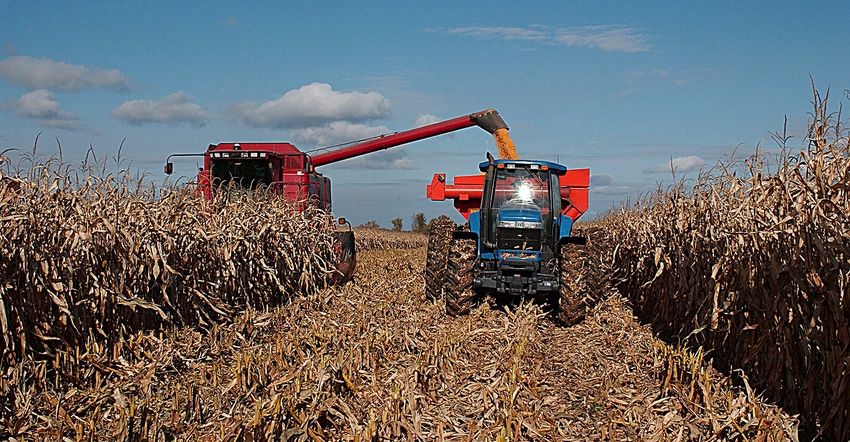
The difference between the 2019 and 2020 crop seasons could not be more apparent now that combines are rolling through the fields. Last year’s rampant spring flooding left fields planted late and struggling throughout the season. This year’s crops were planted relatively early, in contrast, and despite a few rounds of severe weather, are being harvested more quickly than normal.
Corn harvest reached 41% completion through October 11, up from 25% a week ago and more than doubling 2019’s pace of 20%. Analysts expected progress to reach 39% this week. Harvest progress is now eight points ahead of the prior five-year average of 32%.
Ninety-four percent of the crop is now fully mature, up from 87%. That’s also moderately ahead of the prior five-year average of 87%.
Quality ratings took a step back, with 61% of the crop now rated in good-to-excellent condition – falling a point lower compared to last week. Analysts had expected ratings to hold steady at 62%. Another 25% is rated fair (unchanged from last week), with the remaining 14% rated poor or very poor (up a point from last week). Kentucky (90%), has the highest percentage of good-to-excellent crops among the top 18 productions states.
Soybean harvest pace is also rolling along faster than expected, at 61% completion through Sunday. Analysts expected USDA to report 59% progress this week. Total progress has jumped 19 points above the prior five-year average of 42%.
Nearly all (93%) of the crop is now dropping leaves, up from 85% a week ago. The prior five-year average is 90% for the second week of October.
As with corn, soybean quality ratings saw a one-point drop, with analysts expecting that number to hold steady this week. Sixty-three percent of the crop is now rated in good-to-excellent condition. Another 26% is rated fair (unchanged from last week), with the remaining 11% rated poor or very poor (up one point from a week ago).
Winter wheat plantings are now 68% complete, up from 52% last week and moderately ahead of the prior five-year average of 61%. There’s wide variability among the top 18 production states, ranging from 10% completion in North Carolina up to 94% completion in Colorado. Forty-one percent of the crop is now emerged, versus the prior five-year average of 35%.
Click here for updates on additional crops, plus pasture and range conditions.
About the Author(s)
You May Also Like






